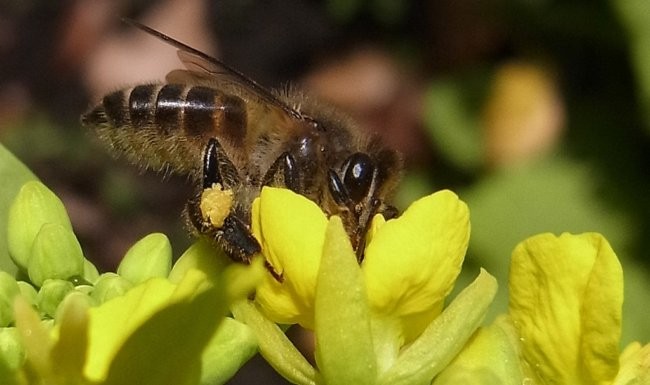What happens when queenless bees have to forage for food and produce new bees at the same time? Researchers find that they adapt and change with their environment.
Asian Scientist Newsroom | August 27, 2015 | In the Lab

AsianScientist (Aug. 27, 2015) - A team of researchers found that the behavior of queenless Apis cerana bees differed from their queenright counterparts. Their work, reported in Journal of Insect Physiology, enhances our understanding of bees' hierarchical structure in the absence of a queen bee.
Activities in a bee hive revolve around the one and only queen bee. Worker bees are females that takes care of the young bees, forage for food and defend the hive. Male drone bees exist to mate with the queen bee. And the queen bee is responsible for producing members of the hive.
If a honey bee (Apis spp.) colony becomes queenless, about a third of young workers activate their ovaries and produce drone males. In doing so, queenless workers take over the role of production in order to maintain the colony. However, do these worker bees multi-task by producing drone males and forage for food at the same time?
Professor Tan Ken of Xishuangbanna Tropical Botanical Garden (XTBG) and his colleagues of Yunnan Agricultural University sought to find out if there were a difference between worker bees with activated and quiescent ovaries. They then studied how the reproductive physiology of queenless workers differed from that of queenright workers. Furthermore, they investigated whether workers with larger numbers of ovarioles had different foraging preferences to workers with smaller numbers of ovarioles.
The researchers used generalized linear models based on restricted maximum likelihood to assess the relationship between task group (in-nest, pollen forager, nectar forager), and queen state (queenless or queenright colony) on ovariole number, ovary activation score and hypopharyngeal size. They nested the effect of colony within task group and queenstate, and included all main effects, and the two-way interaction between task group and queen state.
The study found that queenless workers have enlarged hypopharangeal glands and active ovaries. In the queenless colonies, workers in the brood nest had higher ovary activation scores than workers that were engaged in foraging. The observation supported the hypothesis that reproductive workers should avoid risky foraging. They found no tendency for pollen foragers to have a greater number of ovarioles than nectar foragers.
The researchers also found a positive association between ovary activation and hypopharyngeal (HPG) size in queenless workers and HPG were larger in queenless workers than in queenright workers regardless of whether the worker was undertaking foraging or brood-rearing tasks. These findings suggest that there is no tradeoff between egg production and brood food production.
The article can be found at: Tan et al. (2015) Associations Between Reproduction and Work in Workers of the Asian Hive BeeApis cerana.
———
Source: Chinese Academy of Sciences; Photo: urasimaru/Flickr/CC.
Disclaimer: This article does not necessarily reflect the views of AsianScientist or its staff.

